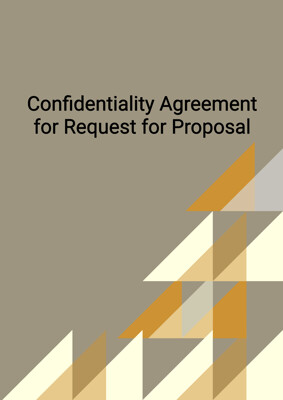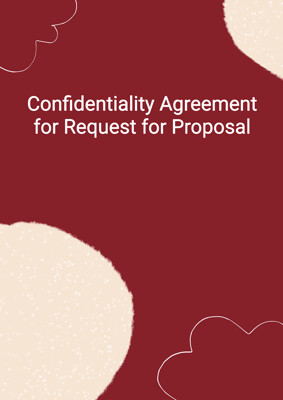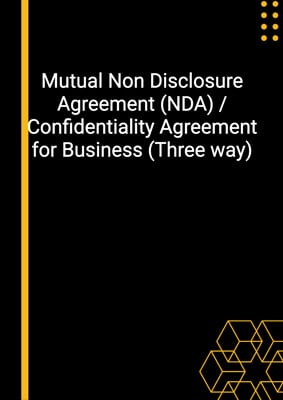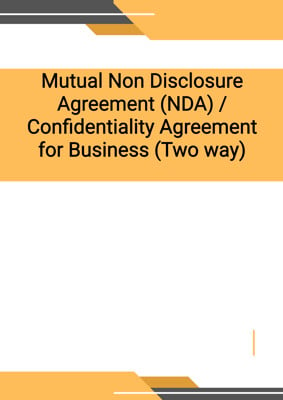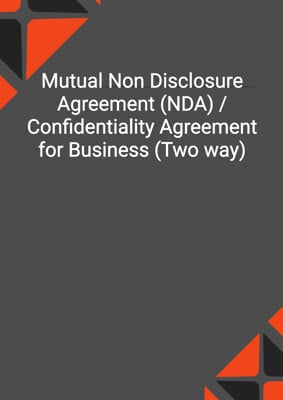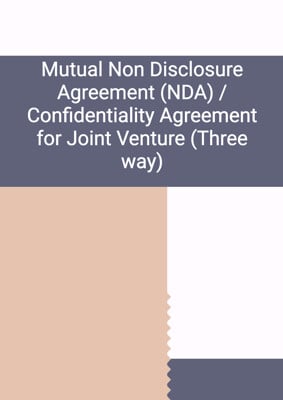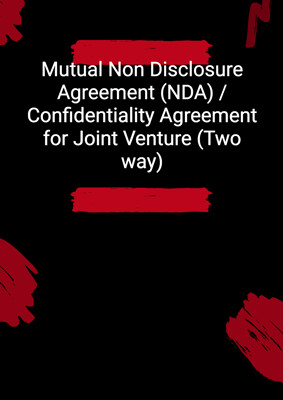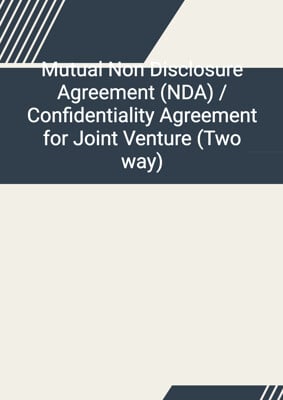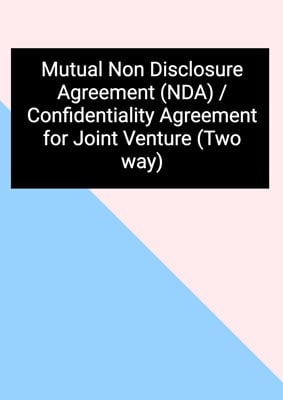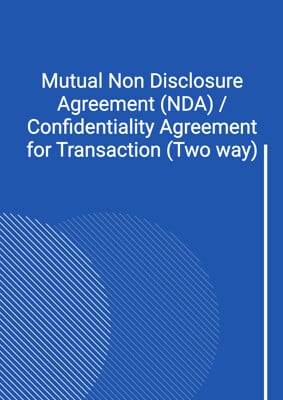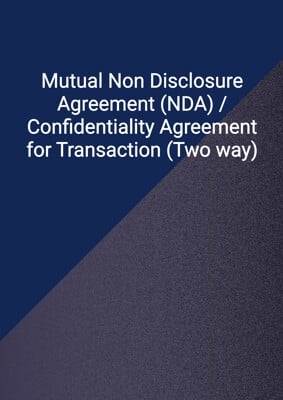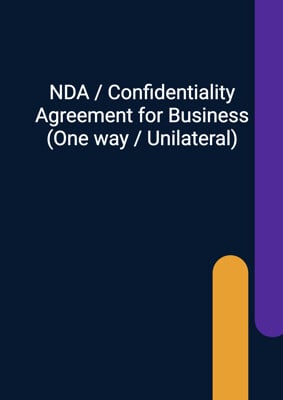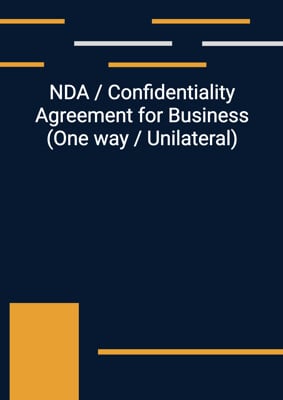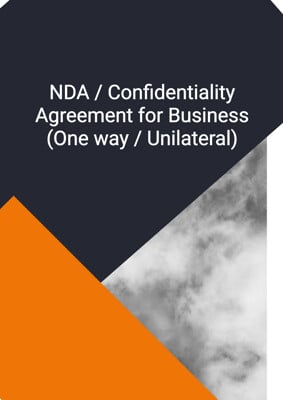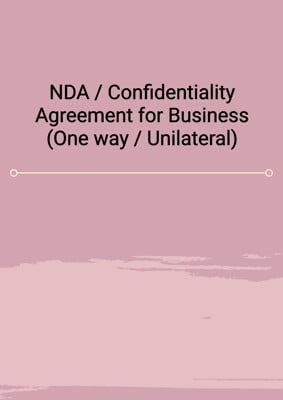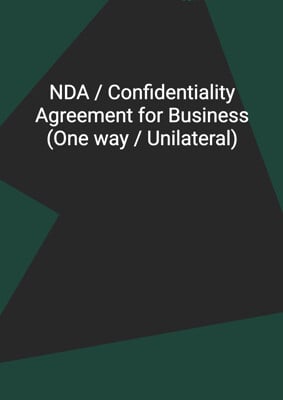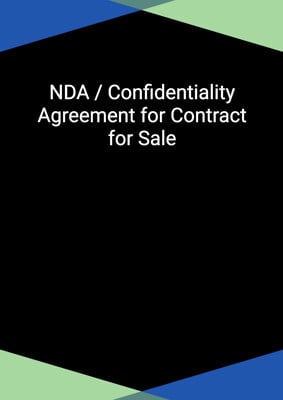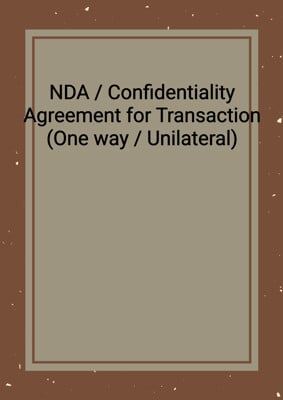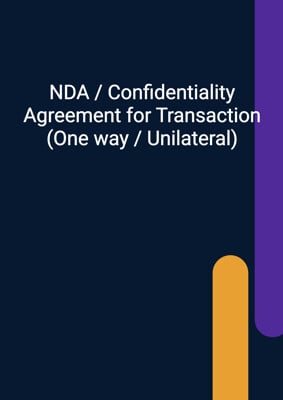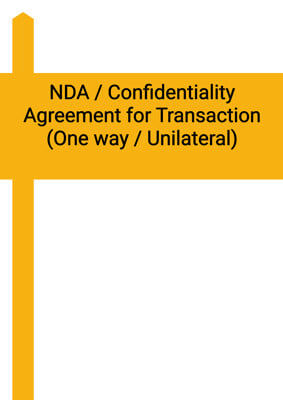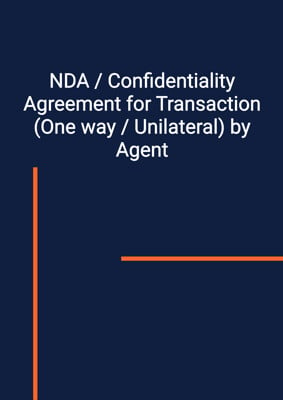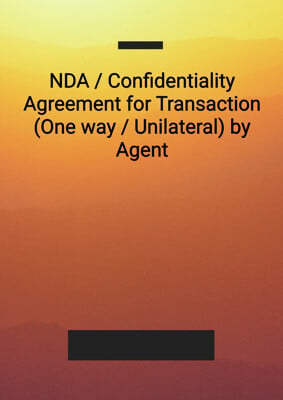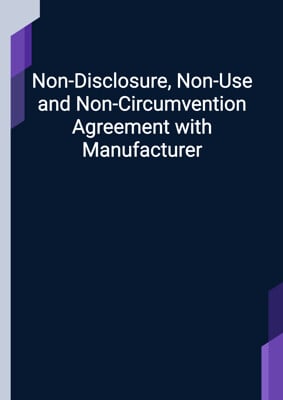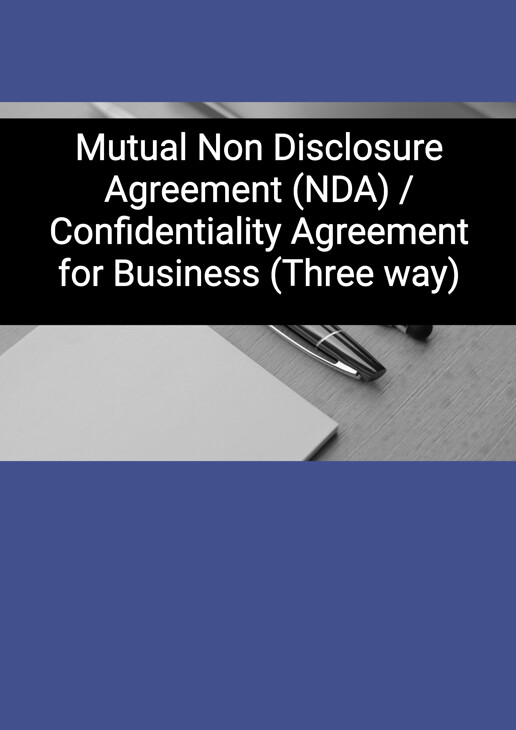
Mutual Non Disclosure Agreement (NDA) / Confidentiality Agreement for Business (Three way)
Neutral
Three way Non Disclosure agreement for discussion of business relationship. It imposes a mutual obligation of confidentiality on the parties who provide and receive information at the same time. This is drafted in neutral form.
How to Tailor the Document for Your Need?
01
Create Document
Fill in the details of the parties. You can click the "Fill with Member’s Information" button to complete it with information saved to your account.
02
Fill Information
Please fill in any additional information by following the step-by-step guide on the left hand side of the preview document and click the "Next" button.
03
Get Document
When you are done, click the "Get Document" button and you can download the document in Word or PDF format.
04
Review Document
Please get all parties to review the document carefully and make any final modifications to ensure that the details are correct before signing the document.
Document Preview
Document Description
This Mutual Non Disclosure Agreement (NDA) / Confidentiality Agreement for Business (Three way) is a legally binding document that establishes the terms and conditions for the exchange of proprietary information between three parties. The agreement is entered into on the current date between Party 1, Party 2, and Party 3.
The purpose of this agreement is to allow the parties to evaluate each other's confidential information for the purpose of determining their respective interest in establishing a business relationship. The agreement defines various terms and expressions used throughout the document to ensure clarity and understanding.
The obligations of confidentiality are outlined in Section 2 of the agreement. Each party agrees to maintain the confidentiality of the information exchanged and to use it exclusively for the purpose stated in the agreement. The parties are prohibited from copying, reproducing, or reducing the information to writing without the disclosing party's consent. Additionally, the parties are not allowed to use, reproduce, transform, or store the information in an externally accessible computer or electronic information retrieval system.
Section 3 of the agreement outlines the confidentiality measures that each party must take to protect the disclosed information. These measures include limiting access to the information to approved representatives, keeping the information separate from other documents and records, applying adequate security measures, keeping a written record of the information received, and not contacting representatives of the other party without authorization.
The agreement also includes provisions for excepted information in Section 4. Certain information is exempt from the obligations of confidentiality, such as information that is publicly available, previously known to the receiving party, disclosed by a third party, or independently developed by the receiving party.
Section 5 of the agreement addresses the return of information. Upon request, each party must return or destroy all documents and materials containing the information and take reasonable steps to remove any information stored within computer systems. The obligations of confidentiality continue even after the completion of the purpose or the return or destruction of the information.
The agreement includes disclaimers and warranties in Section 6. It states that no rights or obligations other than those expressly granted are implied from the agreement. The parties acknowledge that the information may not be all-inclusive and that no representation or warranty is made as to its accuracy, reliability, or completeness. The parties agree that they will not have any liability to each other resulting from the use of the information.
Section 7 addresses the confidentiality of the agreement itself. The parties agree to keep the existence and nature of the agreement confidential and to obtain approval before making any announcements or circulars related to the agreement.
The agreement provides remedies for breach in Section 8, including injunction, specific performance, and other equitable relief. It states that no proof of special damages is necessary for the enforcement of the agreement.
Other provisions of the agreement include waiver, assignment, entire agreement, no license, governing law and jurisdiction, notices and service, and no rights under contracts for third parties.
This detailed description provides a comprehensive overview of the entire document, highlighting its importance and key sections. Each section of the agreement is explained in detail, ensuring a thorough understanding of its contents.
How to use this document?
1. Review the agreement: Familiarize yourself with the entire document to understand its purpose and scope.
2. Identify the parties: Make sure you have the correct names and addresses of Party 1, Party 2, and Party 3.
3. Understand the interpretation: Refer to Section 1 for the definitions of key expressions used throughout the agreement.
4. Obligations of confidentiality: Take note of the obligations outlined in Section 2, including maintaining confidentiality, not copying or reproducing the information, and not using or storing it in an externally accessible system.
5. Confidentiality measures: Follow the confidentiality measures outlined in Section 3, such as limiting access to approved representatives, keeping the information separate, applying adequate security measures, and keeping a written record.
6. Excepted information: Understand the exceptions to the obligations of confidentiality outlined in Section 4, including information that is publicly available or previously known to the receiving party.
7. Return of information: Be aware of the requirements in Section 5 regarding the return or destruction of documents and materials containing the information.
8. Disclaimers and warranties: Take note of the disclaimers and warranties in Section 6, which state that no rights or obligations are implied and that no liability is assumed for the accuracy or completeness of the information.
9. Confidentiality of the agreement: Keep the existence and nature of the agreement confidential, and obtain approval before making any announcements or circulars related to the agreement.
10. Remedies for breach: Understand the remedies available in case of breach, including injunction, specific performance, and other equitable relief.
11. Other provisions: Familiarize yourself with the remaining provisions of the agreement, such as waiver, assignment, entire agreement, no license, governing law and jurisdiction, notices and service, and no rights under contracts for third parties.
12. Seek legal advice if necessary: If you have any questions or concerns about the agreement, consult with a legal professional to ensure compliance and understanding.
Not the right document?
Don’t worry, we have thousands of documents for you to choose from:

